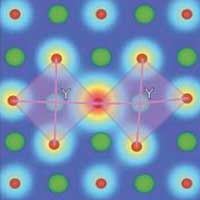 Using supercomputer simulations and a large dataset of materials, researchers found a connection between distortions in the material's atomic structure and the amount of energy required to separate a proton from the material. When this connection occurs, it makes protons heavier and slower, inhibiting proton conduction.
Using supercomputer simulations and a large dataset of materials, researchers found a connection between distortions in the material's atomic structure and the amount of energy required to separate a proton from the material. When this connection occurs, it makes protons heavier and slower, inhibiting proton conduction.
Friday, January 31, 2020
Simulations identify importance of atomic-level distortions in certain fuel cell materials
 Using supercomputer simulations and a large dataset of materials, researchers found a connection between distortions in the material's atomic structure and the amount of energy required to separate a proton from the material. When this connection occurs, it makes protons heavier and slower, inhibiting proton conduction.
Using supercomputer simulations and a large dataset of materials, researchers found a connection between distortions in the material's atomic structure and the amount of energy required to separate a proton from the material. When this connection occurs, it makes protons heavier and slower, inhibiting proton conduction.
If you want to catch more light, twist it
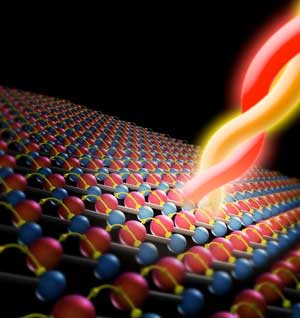 Scientists created devices based on one Weyl semimetal, tantalum arsenide. They observed that this material was able to convert more light to electricity than any other material. The conversion was 10 times higher than previous measurements with other materials.
Scientists created devices based on one Weyl semimetal, tantalum arsenide. They observed that this material was able to convert more light to electricity than any other material. The conversion was 10 times higher than previous measurements with other materials.
2D materials - Stretched to the limit and sparkling on curved surfaces
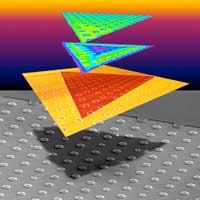 cSientists grew tungsten disulfide 2D crystals over donut shapes. With this approach, they created strain that changed the materials' growth dynamics and light emission properties.
cSientists grew tungsten disulfide 2D crystals over donut shapes. With this approach, they created strain that changed the materials' growth dynamics and light emission properties.
A quantum of solid
 Scientists have demonstrated the cooling of a levitated nanoparticle to the motional quantum ground state.
Scientists have demonstrated the cooling of a levitated nanoparticle to the motional quantum ground state.
Harvesting water from thin air with metal-organic frameworks
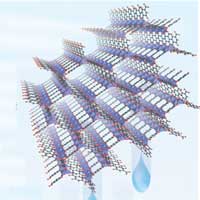 Researchers have identified highly absorbent materials that can extract drinkable water out of thin air - which could potentially lead to technologies that supply potable water in the driest areas on the planet.
Researchers have identified highly absorbent materials that can extract drinkable water out of thin air - which could potentially lead to technologies that supply potable water in the driest areas on the planet.
Thursday, January 30, 2020
Machine learning technique speeds up crystal structure determination
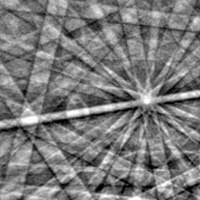 Nanoengineers have developed a computer-based method that could make it less labor-intensive to determine the crystal structures of various materials and molecules, including alloys, proteins and pharmaceuticals.
Nanoengineers have developed a computer-based method that could make it less labor-intensive to determine the crystal structures of various materials and molecules, including alloys, proteins and pharmaceuticals.
Wednesday, January 29, 2020
First successful generation and detection of pure spin currents in antiferromagnetic materials
 To help turbocharge spintronics, condensed matter physicists have developed a method for terahertz waves to convert spin excitations into electrical signals.
To help turbocharge spintronics, condensed matter physicists have developed a method for terahertz waves to convert spin excitations into electrical signals.
Hybrid technique to produce stronger nickel for auto, medical, manufacturing
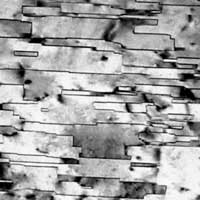 Researchers have created a hybrid technique to fabricate a new form of nickel that may help the future production of lifesaving medical devices, high-tech devices and vehicles with strong corrosion-resistant protection.
Researchers have created a hybrid technique to fabricate a new form of nickel that may help the future production of lifesaving medical devices, high-tech devices and vehicles with strong corrosion-resistant protection.
Researchers' golden touch enhances quantum technology
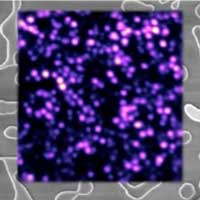 Scientists discovered a new platform for quantum technologies by suspending two-dimensional crystals over pores in a slab of gold. This new approach may help develop new materials for secure communication and sensing technologies based on the unique laws of physics at the atomic levels.
Scientists discovered a new platform for quantum technologies by suspending two-dimensional crystals over pores in a slab of gold. This new approach may help develop new materials for secure communication and sensing technologies based on the unique laws of physics at the atomic levels.
Coupled quantum dots may offer a new way to store quantum information
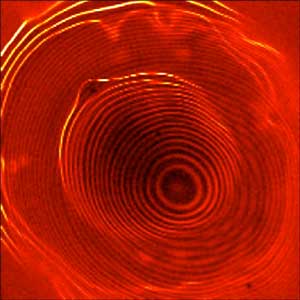 Researchers have for the first time created and imaged a novel pair of quantum dots -- tiny islands of confined electric charge that act like interacting artificial atoms. Such 'coupled' quantum dots could serve as a robust quantum bit, or qubit, the fundamental unit of information for a quantum computer.
Researchers have for the first time created and imaged a novel pair of quantum dots -- tiny islands of confined electric charge that act like interacting artificial atoms. Such 'coupled' quantum dots could serve as a robust quantum bit, or qubit, the fundamental unit of information for a quantum computer.
A nanoscale lattice of palladium and yttrium makes for a superlative carbon-linking catalyst
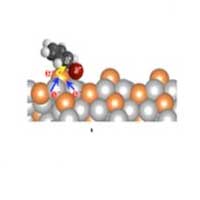 A group of materials scientists has shown that a palladium-based intermetallic electride can improve the efficiency of carbon-carbon cross-coupling reactions. Their findings point the way to a more sustainable world through catalysis.
A group of materials scientists has shown that a palladium-based intermetallic electride can improve the efficiency of carbon-carbon cross-coupling reactions. Their findings point the way to a more sustainable world through catalysis.
It's closeness that counts: how proximity affects the resistance of graphene
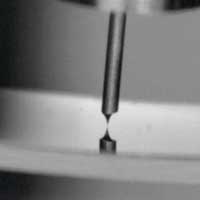 Researchers investigated the influence of the underlying crystal on graphene's electrical resistance. Contrary to previous assumptions, results show that the process known as the 'proximity effect' varies considerably at a nanometre scale.
Researchers investigated the influence of the underlying crystal on graphene's electrical resistance. Contrary to previous assumptions, results show that the process known as the 'proximity effect' varies considerably at a nanometre scale.
Stress test reveals graphene won't crack under pressure
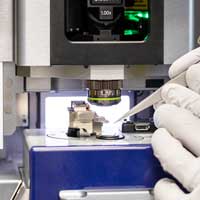 Researchers have discovered that the carbon-based material can withstand more than one billion cycles of high stress before breaking.
Researchers have discovered that the carbon-based material can withstand more than one billion cycles of high stress before breaking.
Cheap nanoparticles stimulate immune response to cancer in the lab
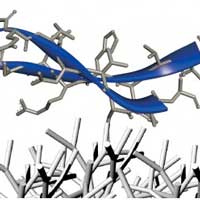 Researchers have developed nanoparticles that, in the lab, can activate immune responses to cancer cells. If they are shown to work as well in the body as they do in the lab, the nanoparticles might provide an effective and more affordable way to fight cancer.
Researchers have developed nanoparticles that, in the lab, can activate immune responses to cancer cells. If they are shown to work as well in the body as they do in the lab, the nanoparticles might provide an effective and more affordable way to fight cancer.
Microswimmers swim faster over slippery surfaces
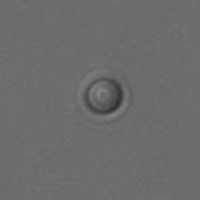 Tiny self-propelling spheres, measuring only micrometers, move faster over a hydrophobic silicone surface than they do over hydrophilic glass.
Tiny self-propelling spheres, measuring only micrometers, move faster over a hydrophobic silicone surface than they do over hydrophilic glass.
Unexpected behaviour of the material: From 2D crystal to 1D wire
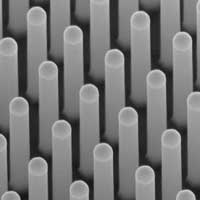 No volume, not even a surface: a one-dimensional material is like a wire and has properties that are completely different to its 3D counterpart. Physicists have now discovered a system that, at warmer temperatures, forms self-organized wires consisting of only one row of individual atoms.
No volume, not even a surface: a one-dimensional material is like a wire and has properties that are completely different to its 3D counterpart. Physicists have now discovered a system that, at warmer temperatures, forms self-organized wires consisting of only one row of individual atoms.
Theoretical study points to jade-like materials as quantum spin liquids
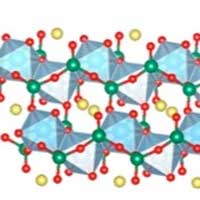 This exotic liquid-like state of matter in which magnetism never freezes could give rise to high-temperature superconductivity and form the basis for quantum computing.
This exotic liquid-like state of matter in which magnetism never freezes could give rise to high-temperature superconductivity and form the basis for quantum computing.
Optical vacuum cleaner can manipulate nanoparticles
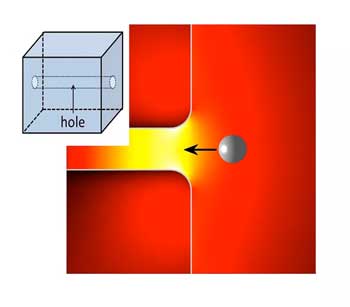 Researchers have developed the concept for constructing an 'optical vacuum cleaner'. Due to its optical properties, it can trap nanoparticles from the environment.
Researchers have developed the concept for constructing an 'optical vacuum cleaner'. Due to its optical properties, it can trap nanoparticles from the environment.
Tuesday, January 28, 2020
Crab-shell and seaweed compounds spin into yarns for sustainable and functional materials
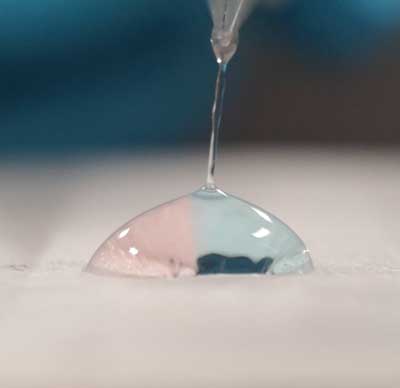 Biobased fibres are made from two renewable marine resources and with promise in advanced applications, in wovens and medical materials, among others. The threads draw strength from the crab chitin component and flexibility from seaweed alginate.
Biobased fibres are made from two renewable marine resources and with promise in advanced applications, in wovens and medical materials, among others. The threads draw strength from the crab chitin component and flexibility from seaweed alginate.
Putting a nanomachine to work
 A team of chemists has successfully coupled the directed motion of a light-activated molecular motor to a different chemical unit - thus taking an important step toward the realization of synthetic nanomachines.
A team of chemists has successfully coupled the directed motion of a light-activated molecular motor to a different chemical unit - thus taking an important step toward the realization of synthetic nanomachines.
New magnetic interaction discovered
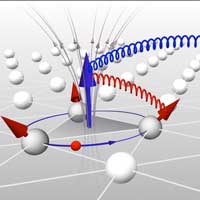 The discovery is not only important for basic research in physics, but the scientists also expect it to be beneficial in technical innovations. As an example, the interaction could help create special nanoscale magnetic structures.
The discovery is not only important for basic research in physics, but the scientists also expect it to be beneficial in technical innovations. As an example, the interaction could help create special nanoscale magnetic structures.
Making sense of flexible sensor systems
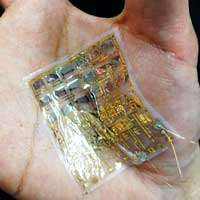 Flexible sheet-type magnetic sensor systems developed with tenfold improvement in sensitivity.
Flexible sheet-type magnetic sensor systems developed with tenfold improvement in sensitivity.
Atomic layer 3D printing
 A team of scientists and engineers plan to combine expertise in the chemical control of atomic layer deposition, in gas delivery, microelectromechanical devices, and microprocessing and automation, in order to demonstrate the potential of atomic-layer 3D printing.
A team of scientists and engineers plan to combine expertise in the chemical control of atomic layer deposition, in gas delivery, microelectromechanical devices, and microprocessing and automation, in order to demonstrate the potential of atomic-layer 3D printing.
Monday, January 27, 2020
Science at the interface: Bioinspired materials reveal useful properties
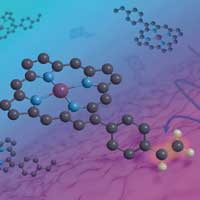 Researchers explore new materials with physical properties that can be custom-tailored to suit particular needs. The work is inspired by mechanisms in nature, where the complex three-dimensional structure of surrounding proteins influences the electrochemical properties of metals at their core.
Researchers explore new materials with physical properties that can be custom-tailored to suit particular needs. The work is inspired by mechanisms in nature, where the complex three-dimensional structure of surrounding proteins influences the electrochemical properties of metals at their core.
Nanoparticle chomps away plaques that cause heart attacks
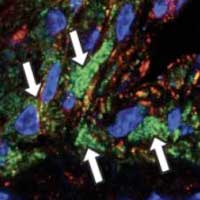 Scientists have invented a nanoparticle that eats away - from the inside out - portions of plaques that cause heart attacks.
Scientists have invented a nanoparticle that eats away - from the inside out - portions of plaques that cause heart attacks.
Nanocontainers introduced into the nucleus of living cells
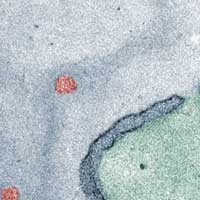 An interdisciplinary team has succeeded in creating a direct path for artificial nanocontainers to enter into the nucleus of living cells. To this end, they produced biocompatible polymer vesicles that can pass through the pores that decorate the membrane of the cell nucleus.
An interdisciplinary team has succeeded in creating a direct path for artificial nanocontainers to enter into the nucleus of living cells. To this end, they produced biocompatible polymer vesicles that can pass through the pores that decorate the membrane of the cell nucleus.
How to take a picture of a light pulse
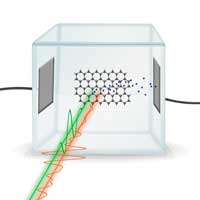 Until now, complex experimental equipment was required to measure the shape of a light pulse. Researchers have now made this much easier.
Until now, complex experimental equipment was required to measure the shape of a light pulse. Researchers have now made this much easier.
Seeing inside a battery while it's working
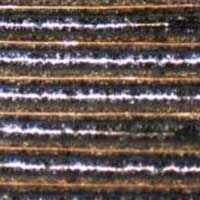 Thin radio-frequency detector monitors capacity of commercial lithium-ion battery.
Thin radio-frequency detector monitors capacity of commercial lithium-ion battery.
Turning trash into valuable graphene in a flash
 'Green' process promises pristine graphene in bulk using waste food, plastic and other materials.
'Green' process promises pristine graphene in bulk using waste food, plastic and other materials.
New type of curved acoustic beams to provide manipulations with nanoparticles
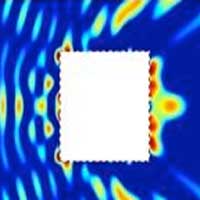 Scientists modeled and confirmed the existence of a new type of curved acoustic wave beams - acoustical hooks.
Scientists modeled and confirmed the existence of a new type of curved acoustic wave beams - acoustical hooks.
Looking at light that is forbidden
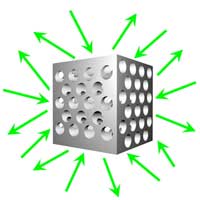 Scientists have developed a fully experimental method for determining the photonic band gap, literally making visible the unseen.
Scientists have developed a fully experimental method for determining the photonic band gap, literally making visible the unseen.
Friday, January 24, 2020
How disorder in nanocrystals enables heat-therapeutic systems
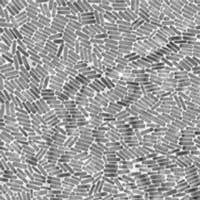 Nanocrystals, when they are dressed by the right kind of imperfections, adjust their electronic properties to favorably convert energy into heat, an important attribute for potential use in smart materials for energy, health, sensors etc.
Nanocrystals, when they are dressed by the right kind of imperfections, adjust their electronic properties to favorably convert energy into heat, an important attribute for potential use in smart materials for energy, health, sensors etc.
Nano-thin flexible touchscreens could be printed like newspaper
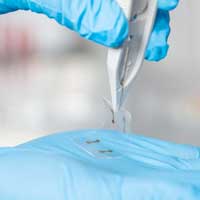 New touch-responsive technology is 100 times thinner than existing touchscreen materials and so pliable it can be rolled up like a tube.
New touch-responsive technology is 100 times thinner than existing touchscreen materials and so pliable it can be rolled up like a tube.
New method to detect defects in 2D materials for future electronics, sensors
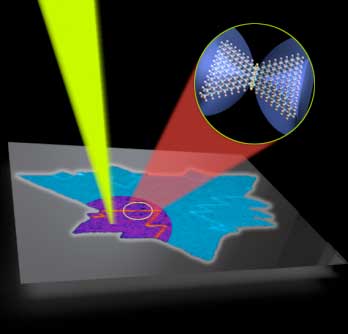 The researchers' solution is to use laser light combined with a phenomenon called second harmonic generation, in which the frequency of the light shone on the material reflects at double the original frequency.
The researchers' solution is to use laser light combined with a phenomenon called second harmonic generation, in which the frequency of the light shone on the material reflects at double the original frequency.
A new stretchable battery can power wearable electronics
 The experimental device promises to provide a safe and comfortable power source for technologies that must bend and flex with our bodies.
The experimental device promises to provide a safe and comfortable power source for technologies that must bend and flex with our bodies.
The paints that eat pollutants and heat homes
 Applying a coat of paint on the walls of a house may soon help to heat it, saving energy and reducing CO2 emissions. It could also clean the air that we breathe, breaking down chemicals and pollutants, and eliminating harmful pathogens.
Applying a coat of paint on the walls of a house may soon help to heat it, saving energy and reducing CO2 emissions. It could also clean the air that we breathe, breaking down chemicals and pollutants, and eliminating harmful pathogens.
A breakthrough in molding materials at the nanoscale
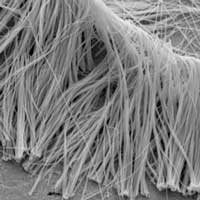 In a potential game-changing shift in how nano- and quantum devices are designed and manufactured, researchers have discovered that these materials are actually very conducive to nanomolding, thanks to their atoms? ability to self-organize.
In a potential game-changing shift in how nano- and quantum devices are designed and manufactured, researchers have discovered that these materials are actually very conducive to nanomolding, thanks to their atoms? ability to self-organize.
Thursday, January 23, 2020
A megalibrary of nanoparticles
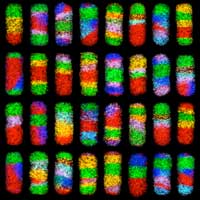 Using straightforward chemistry and a mix-and-match, modular strategy, researchers have developed a simple approach that could produce over 65,000 different types of complex nanoparticles, each containing up to six different materials and eight segments, with interfaces that could be exploited in electrical or optical applications.
Using straightforward chemistry and a mix-and-match, modular strategy, researchers have developed a simple approach that could produce over 65,000 different types of complex nanoparticles, each containing up to six different materials and eight segments, with interfaces that could be exploited in electrical or optical applications.
Tuning of Optical absorbance of graphene quantum dots by high magnetic fields
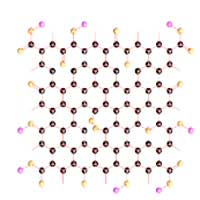 Scientists report the synthesis of graphene quantum dots under an external high magnetic field and their applications in photothermal therapy.
Scientists report the synthesis of graphene quantum dots under an external high magnetic field and their applications in photothermal therapy.
A new way to count and identify microscopic particles in fluids
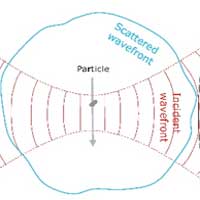 A new method is proposed to automate the measurement of nano- to microscale particles suspended in fluid. The single particle extinction and scattering (SPES) method can accurately determine the material properties and size distribution of individual particles.
A new method is proposed to automate the measurement of nano- to microscale particles suspended in fluid. The single particle extinction and scattering (SPES) method can accurately determine the material properties and size distribution of individual particles.
Predicting the degradation behavior of advanced medical devices
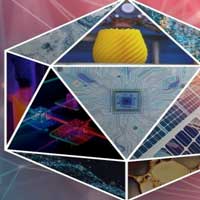 Thin film studies are suggested as a fast and reliable method to determine the degradation of complex biomacromolecules.
Thin film studies are suggested as a fast and reliable method to determine the degradation of complex biomacromolecules.
Well-designed substrates make large single crystal bi-/tri-layer graphene possible
 Researchers fabricate single crystal copper nickel alloy foils as substrates for the growth of multilayer graphene with specific stacking pattern, and unprecedented quality and size.
Researchers fabricate single crystal copper nickel alloy foils as substrates for the growth of multilayer graphene with specific stacking pattern, and unprecedented quality and size.
New nanotechnology books in January
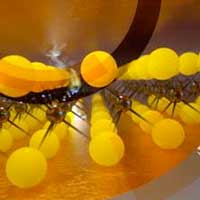 Here are some new books on nanotechnology topics that just got published.
Here are some new books on nanotechnology topics that just got published.
New liquid metal wearable pressure sensor created for health monitoring applications
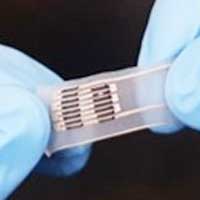 This technology is capable of sensitive, precise, and continuous measurement of physiological and physical signals and shows great potential for health monitoring applications and the early diagnosis of diseases.
This technology is capable of sensitive, precise, and continuous measurement of physiological and physical signals and shows great potential for health monitoring applications and the early diagnosis of diseases.
Ghostly particles detected in condensates of light and matter
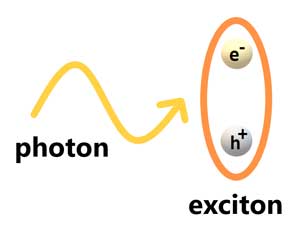 Scientists make first detection of 'ghost particles' from Bose-Einstein condensates made of light and matter.
Scientists make first detection of 'ghost particles' from Bose-Einstein condensates made of light and matter.
3D-printable nanocomposite opens an entirely new world of printable smart materials
 As 3D printing enters the mainstream, nanotechnology scientists are finding remarkable new ways to extend its future promise.
As 3D printing enters the mainstream, nanotechnology scientists are finding remarkable new ways to extend its future promise.
Wednesday, January 22, 2020
Physicist obtain atomically thin molybdenum disulfide films on large-area substrates
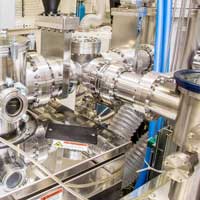 Researchers have managed to grow atomically thin films of molybdenum disulfide spanning up to several tens of square centimeters. It was demonstrated that the material's structure can be modified by varying the synthesis temperature.
Researchers have managed to grow atomically thin films of molybdenum disulfide spanning up to several tens of square centimeters. It was demonstrated that the material's structure can be modified by varying the synthesis temperature.
Integrate micro chips for electronic skin
 Researchers present the first fully integrated flexible electronics made of magnetic sensors and organic circuits which opens the path towards the development of electronic skin.
Researchers present the first fully integrated flexible electronics made of magnetic sensors and organic circuits which opens the path towards the development of electronic skin.
Coating helps electronics stay cool by sweating
 Researchers present a MOF coating for electronics that releases water vapor to dissipate heat from running devices - a new thermal management method that could prevent electronics from overheating and keep them cooler compared to existing strategies.
Researchers present a MOF coating for electronics that releases water vapor to dissipate heat from running devices - a new thermal management method that could prevent electronics from overheating and keep them cooler compared to existing strategies.
Physicists trap light in nanoresonators for record time
 The reference particle captured light for a time exceeding 200 periods of one wave oscillation, 20-40 times longer than usual; this opens new perspectives in such areas as manufacturing compact sensors, night vision devices, and optical data transmission.
The reference particle captured light for a time exceeding 200 periods of one wave oscillation, 20-40 times longer than usual; this opens new perspectives in such areas as manufacturing compact sensors, night vision devices, and optical data transmission.
Subscribe to:
Comments (Atom)
